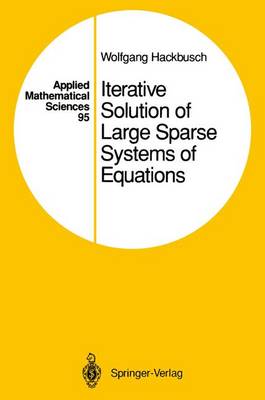Applied Mathematical Sciences
1 primary work
Book 95
Iterative Solution of Large Sparse Systems of Equations
by Wolfgang Hackbusch
Published 29 November 1993
C. F. GauS in a letter from Dec. 26, 1823 to Gerling: 3c~ empfe~le 3~nen biegen IDlobu9 aur 9tac~a~mung. ec~werlic~ werben eie ie wieber bi- reet eliminiren, wenigftens nic~t, wenn eie me~r als 2 Unbefannte ~aben. :Da9 inbirecte 93erfa~ren 109st sic~ ~alb im ec~lafe ausfii~ren, ober man fann wo~renb be9gelben an anbere :Dinge benfen. [CO F. GauS: Werke vol. 9, Gottingen, p. 280, 1903] What difference exists between solving large and small systems of equations? The standard methods well-known to any student oflinear algebra are appli- cable to all systems, whether large or small. The necessary amount of work, however, increases dramatically with the size, so one has to search for algo- rithms that most efficiently and accurately solve systems of 1000, 10,000, or even one million equations. The choice of algorithms depends on the special properties the matrices in practice have. An important class of large systems arises from the discretisation of partial differential equations. In this case, the matrices are sparse (i. e. , they contain mostly zeros) and well-suited to iterative algorithms.
Because of the background in partial differential equa- tions, this book is closely connected with the author's Theory and Numerical Treatment of Elliptic Differential Equations, whose English translation has also been published by Springer-Verlag. This book grew out of a series of lectures given by the author at the Christian-Albrecht University of Kiel to students of mathematics.
Because of the background in partial differential equa- tions, this book is closely connected with the author's Theory and Numerical Treatment of Elliptic Differential Equations, whose English translation has also been published by Springer-Verlag. This book grew out of a series of lectures given by the author at the Christian-Albrecht University of Kiel to students of mathematics.
